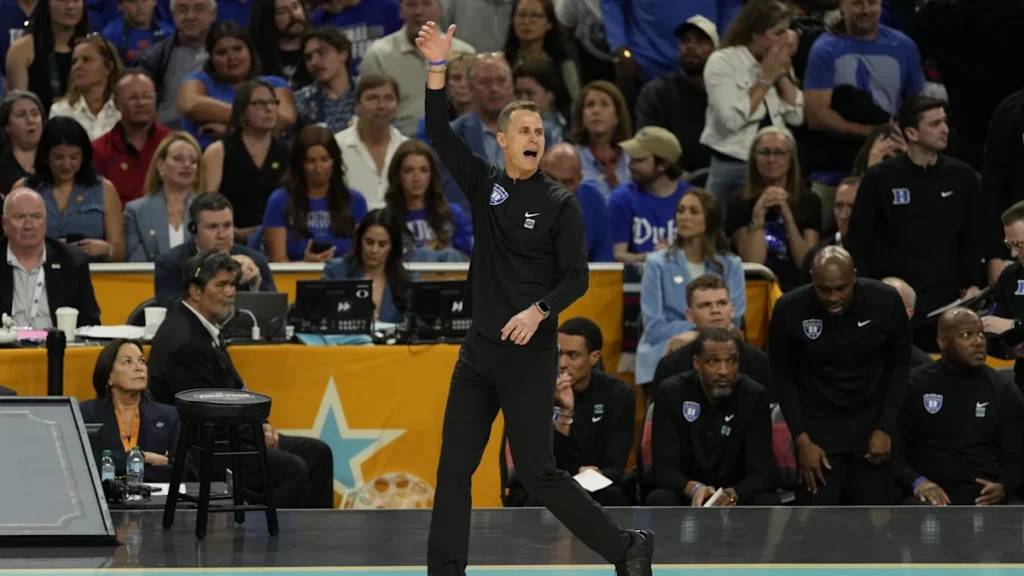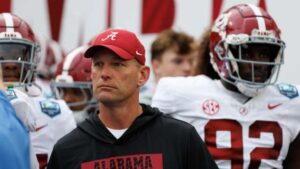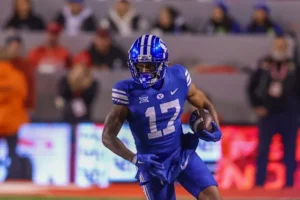
Goodbye, Hello: Incoming Duke Basketball Recruiting Class Shuffles the National Rankings
The landscape of college basketball continues to shift, and nowhere is that more apparent than in Durham, North Carolina. As the Blue Devils prepare for a new era under head coach Jon Scheyer, the complexion of their incoming recruiting class—and its ripple effect on national rankings—has taken center stage. The once-vaunted 2024 class that was expected to propel Duke back into Final Four contention is undergoing significant changes, and the implications have stretched across the college basketball map.
The Blue Devils entered the 2024-25 recruiting cycle with one of the top classes in the nation, boasting commitments from multiple five-star prospects and a couple of high-upside four-stars. But as the offseason progressed and the transfer portal roared to life, a series of decisions—some anticipated, others less so—began to redefine what Duke’s incoming class would look like. And with each decommitment, reclassification, or shift in target focus, the ripple effect on national rankings became unavoidable.
At the heart of the change was the surprise departure of two top-rated signees who chose alternative paths. One elected to take the professional route, signing with an international club overseas, while the other requested a release from his National Letter of Intent following changes to Duke’s coaching staff and roster makeup. Both were consensus top-15 players nationally, and their exits sent shockwaves through recruiting circles.
Suddenly, Duke’s class went from being the consensus No. 1 or No. 2 in the country to somewhere closer to the bottom of the top 10, depending on the recruiting service consulted. That shift not only impacted Duke’s standing but also opened the door for programs like Kentucky, Kansas, and Alabama to surge ahead in the rankings. Teams that had already assembled strong classes now had the upper hand in the battle for the title of “nation’s best recruiting haul.”
While the loss of top-end talent naturally raises questions about immediate expectations, it’s not all doom and gloom in Durham. The class still boasts several high-level prospects who are more than capable of contributing from day one. Most notably, the commitment of a versatile five-star wing out of the Midwest remains intact. At 6-foot-7 with a smooth shooting stroke and defensive upside, he projects as a critical piece in Scheyer’s system—a player who can defend multiple positions, stretch the floor, and create off the dribble when needed.
Additionally, Duke managed to secure a late commitment from a high-rising four-star guard who lit up the spring circuit and caught the attention of multiple blue-blood programs. His inclusion not only helps balance the loss of talent but also brings much-needed energy and hunger to a team that’s expected to reload rather than rebuild.
Still, it’s impossible to ignore how dramatically the class has changed in a short period. The recalibration of the national recruiting rankings is a natural result. While the exact order varies depending on whether one consults ESPN, 247Sports, On3, or Rivals, there’s a clear consensus that Duke is no longer the class of the class. That mantle now likely belongs to Kentucky, which has managed to secure and retain several elite prospects while supplementing with experienced transfers.
The changes have also sparked broader conversations about the volatility of modern college basketball recruiting. The combination of the transfer portal, NIL deals, and professional opportunities overseas or in leagues like Overtime Elite and the G League Ignite has made it harder than ever to project what a class will look like six months—or even six weeks—after it’s announced. For programs like Duke that rely heavily on elite high school talent, the margin for error has shrunk considerably.
Adding to the complexity is the growing reality that programs must now recruit not just high schoolers, but their own players. Retaining talent has become just as important as acquiring it. For Duke, the return of a couple of key sophomores who chose not to enter the draft has helped steady the ship. Their experience and leadership will be essential as the incoming freshmen transition to the college level.
There’s also the looming influence of the NBA Draft and how it alters recruiting strategy. Duke had several underclassmen test the waters, and while some declared, others opted to return. That calculus impacted which incoming freshmen were expected to have immediate roles. With those roles now potentially larger than originally projected, it remains to be seen how the incoming class will adjust to higher expectations.
Meanwhile, rival programs have capitalized on Duke’s moment of uncertainty. Kansas, for instance, used its strong finish to the season and returning nucleus to woo a pair of elite prospects who were previously leaning elsewhere. Alabama, led by Nate Oats, also made significant inroads, flipping a five-star big man who had been a Duke target. These developments helped shift the recruiting narrative nationally and reshaped the top of the rankings.
All of this comes as Duke attempts to find consistency under Scheyer, who is still relatively early in his tenure but already facing high expectations. The Blue Devils are coming off a season that ended earlier than hoped in the NCAA Tournament, and fans are hungry for a return to the glory days of deep March runs and national titles. Recruiting remains the lifeblood of that ambition, and while the incoming class may look different than originally expected, there’s still hope it can deliver.
From a developmental standpoint, there’s a silver lining to having a slightly less top-heavy class. The pressure on freshmen to be one-and-done saviors is somewhat reduced, and the coaching staff can focus more on long-term growth and team cohesion. There’s also the possibility that this group, while less hyped, ends up being more connected and team-oriented—qualities that often separate good teams from great ones in the NCAA Tournament.
As the dust settles, Duke’s staff is already looking ahead. The 2025 class is loaded with talent, and the Blue Devils are in strong early position with several top-10 prospects. The adjustments made during this cycle could ultimately serve as valuable lessons in adaptability and timing. There’s also the matter of balancing the roster with veteran transfers, and early indications suggest Duke will be active in that market to complement its freshmen.
Ultimately, while the loss of elite talent is never ideal, the fluid nature of modern recruiting means every class is a work in progress. What matters most is how those pieces fit together on the court. If the remaining freshmen can mesh with the returning veterans, and if Scheyer can find the right balance in style and rotation, the Blue Devils could still find themselves in contention come March.
It’s also worth noting that national rankings—while important for perception and recruiting battles—don’t always translate directly to on-court success. Some of Duke’s most successful teams over the last 20 years have included players who developed over time rather than dominating from day one. That history provides some comfort for a fan base adjusting to the new reality of college basketball.
For now, Duke’s incoming class may not carry the same buzz it did six months ago, but it still holds promise. The rankings may have shifted, but the expectations haven’t. In Durham, the goal remains the same: compete, contend, and chase championships. Whether this class delivers on that promise remains to be seen—but the story is far from over.





